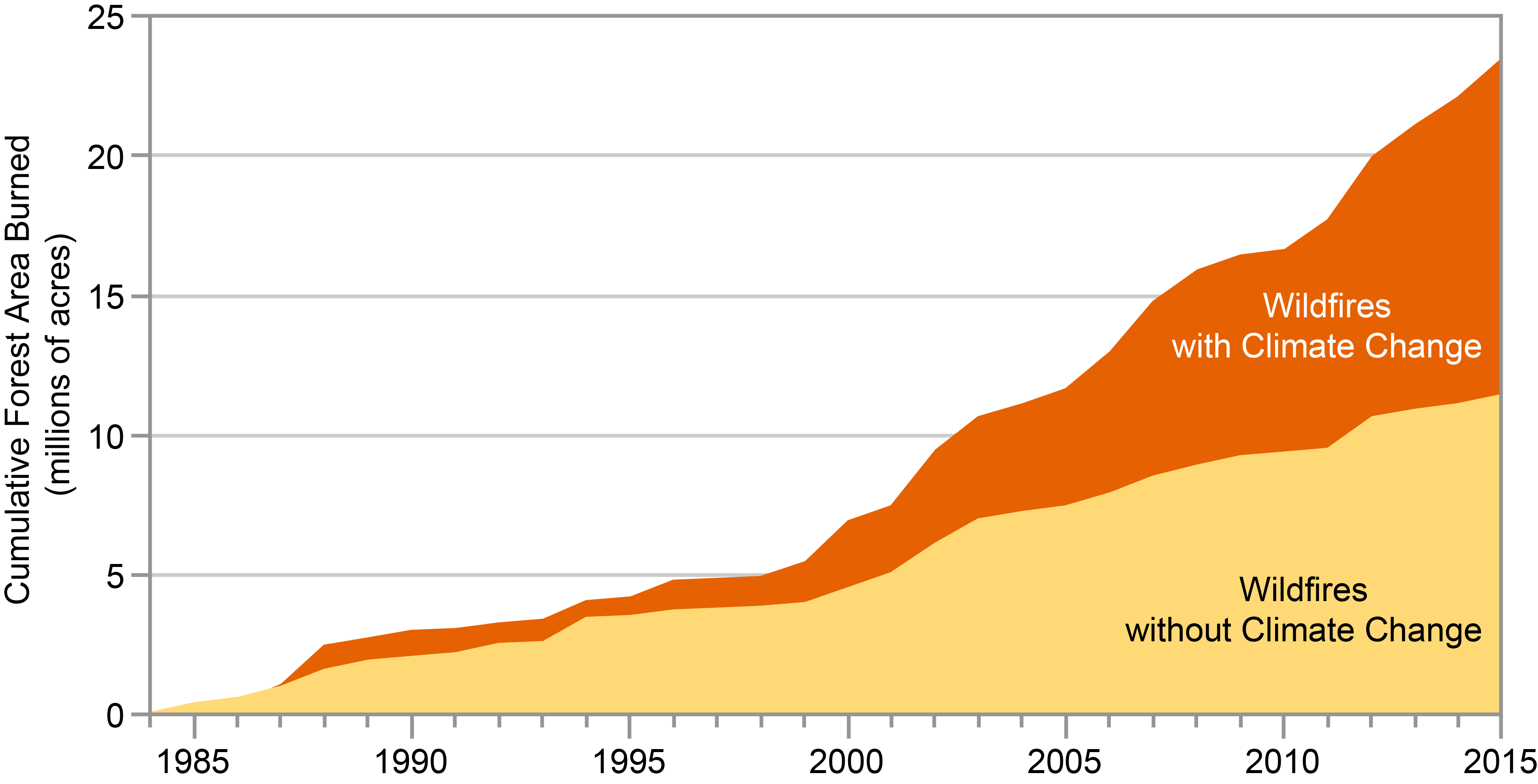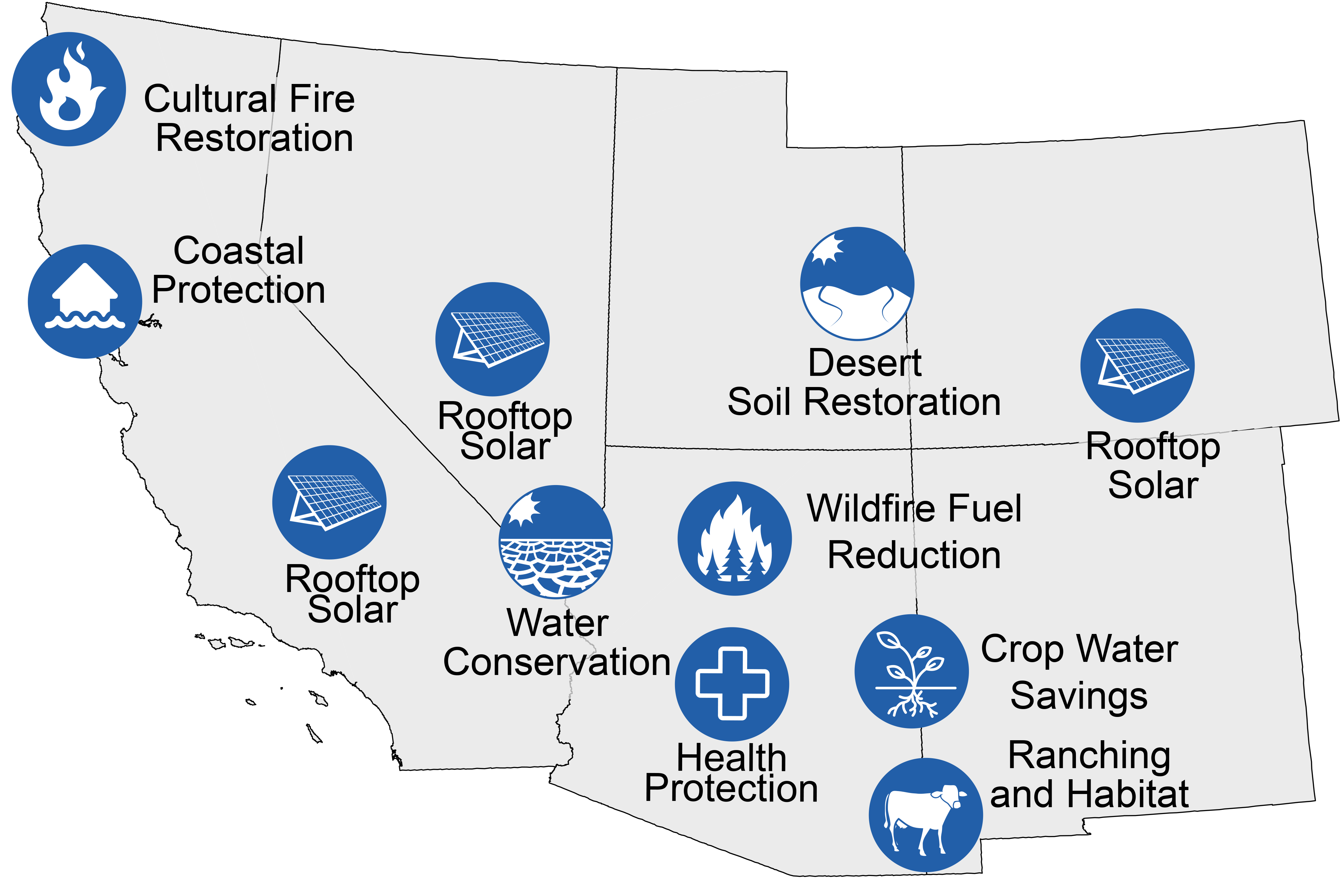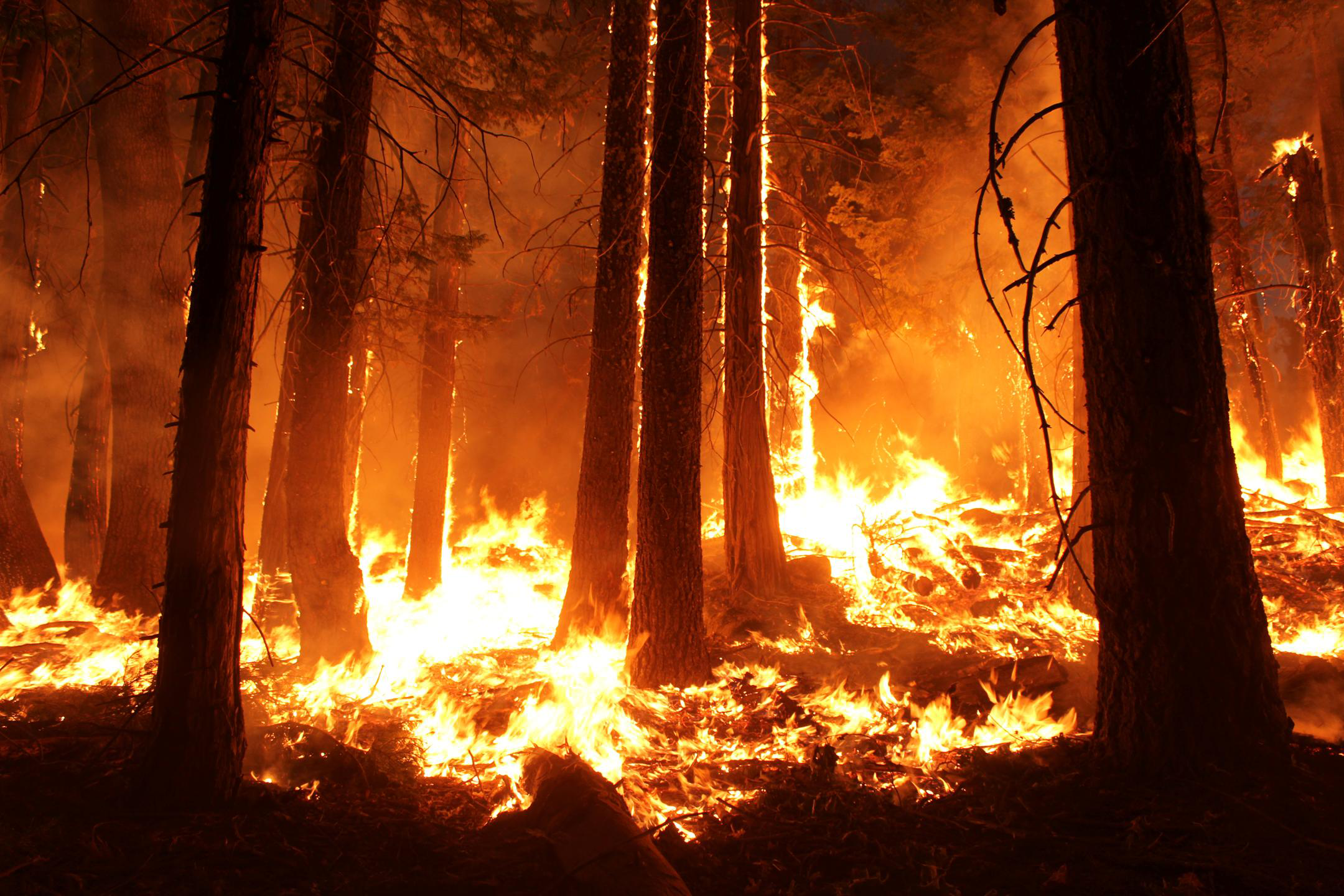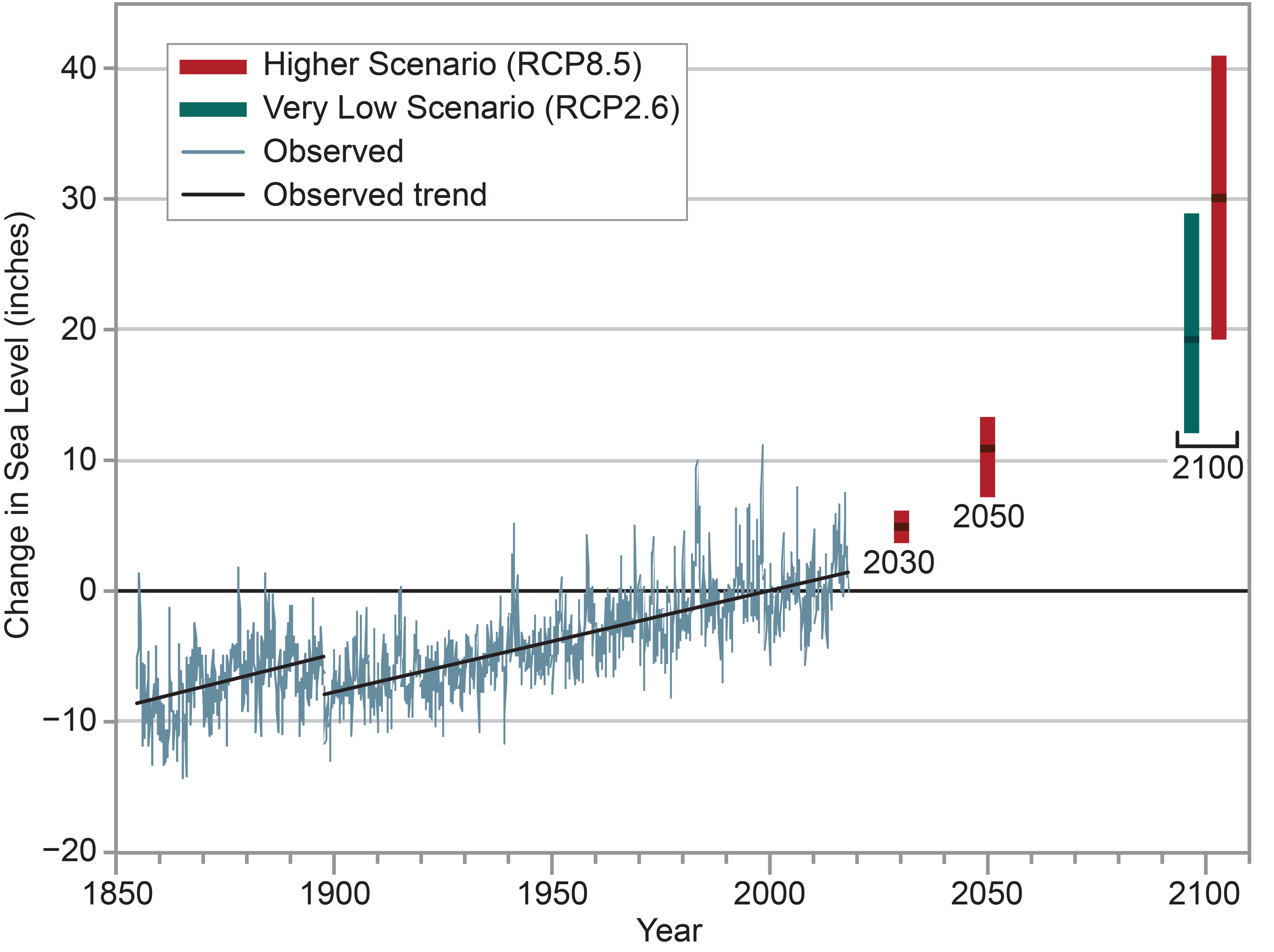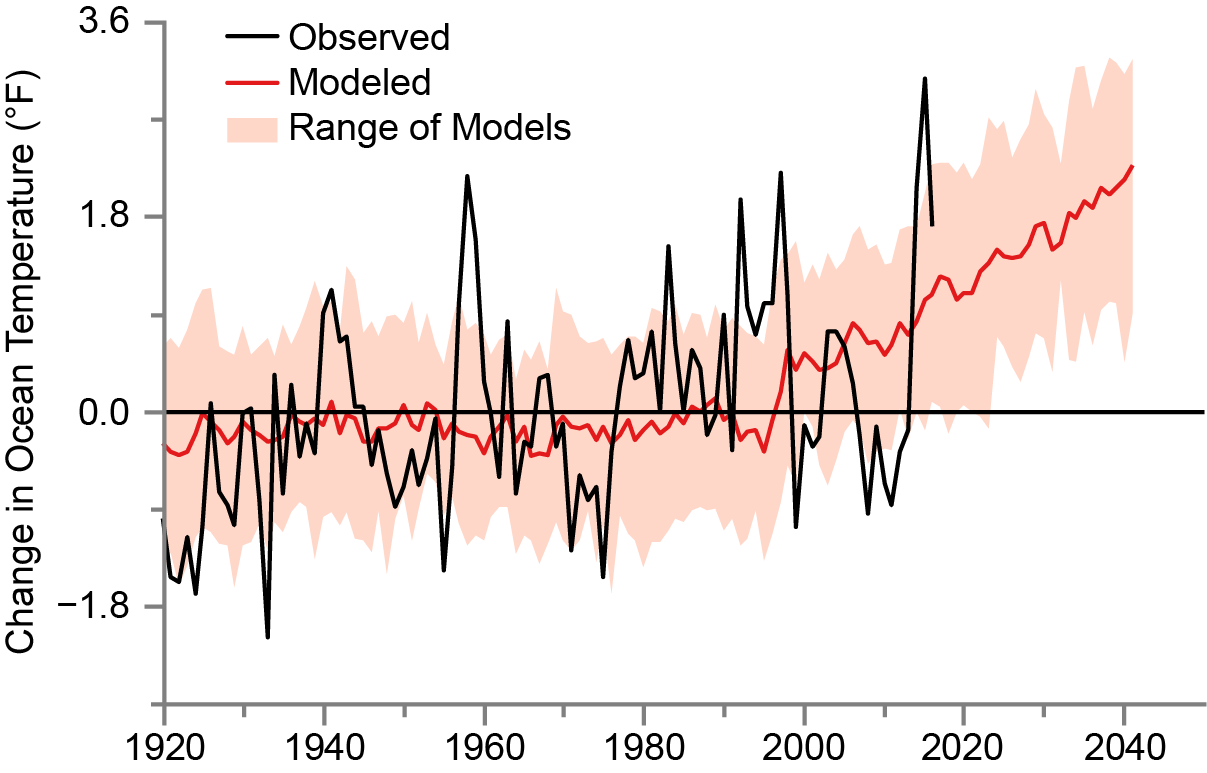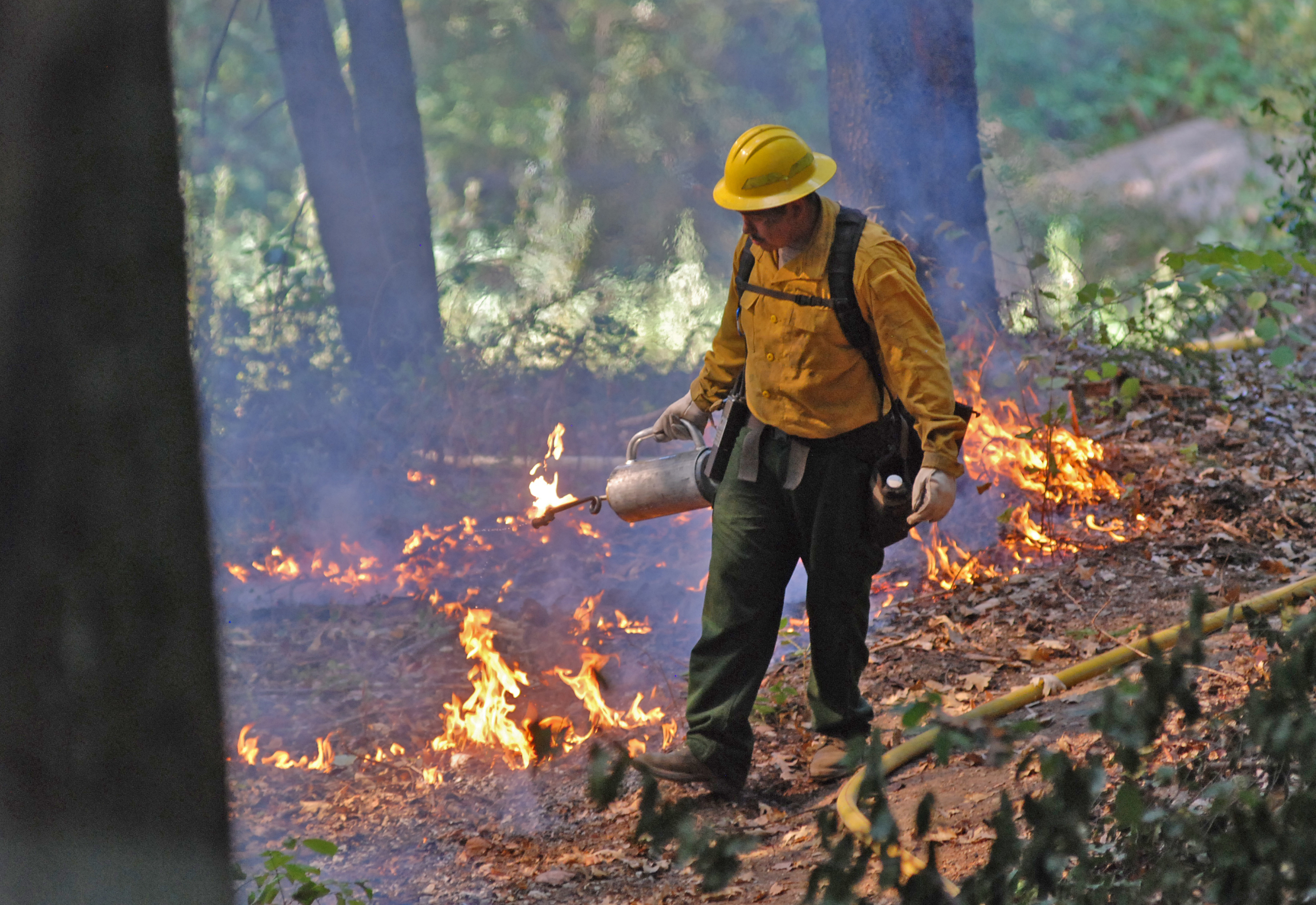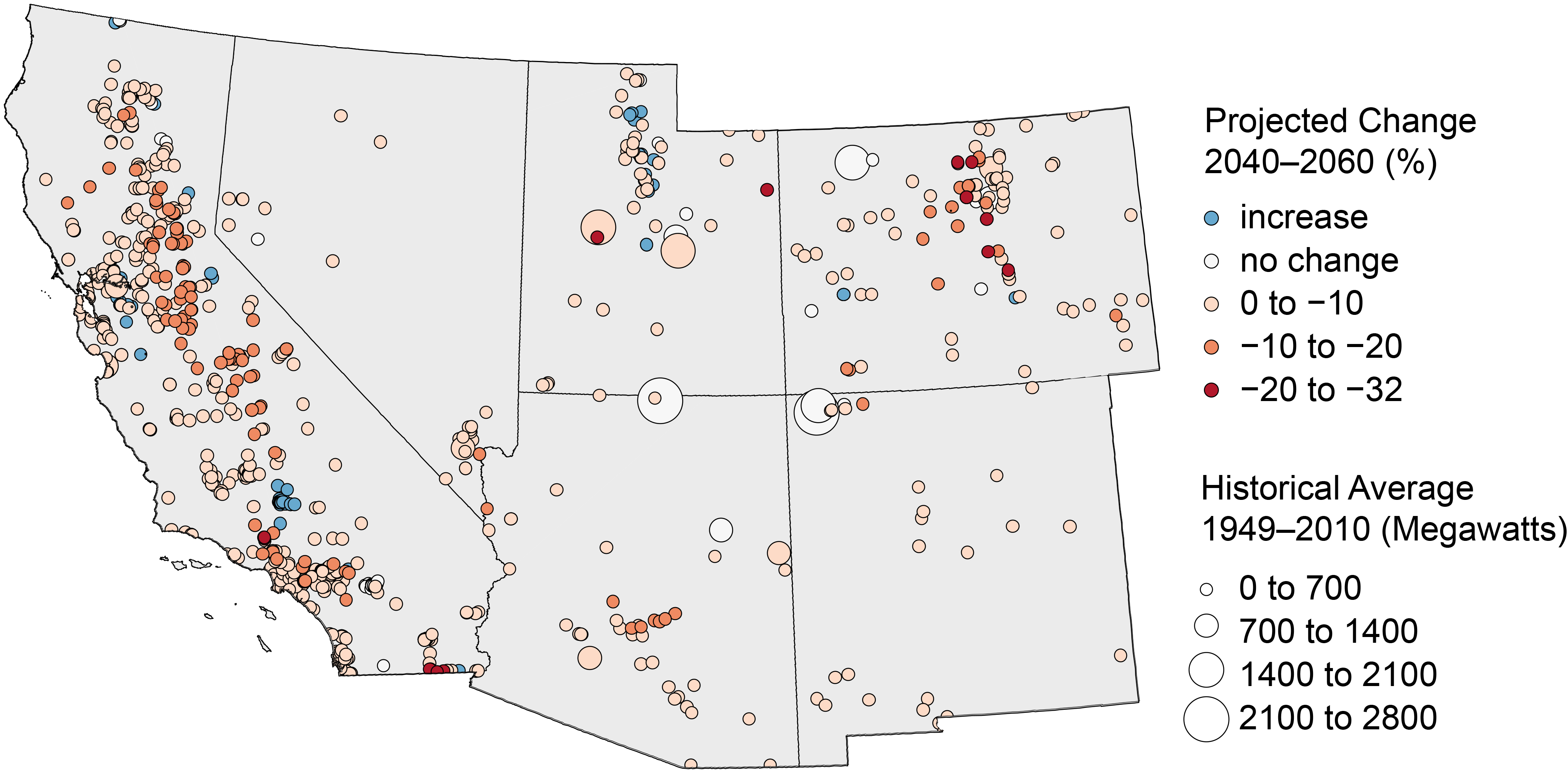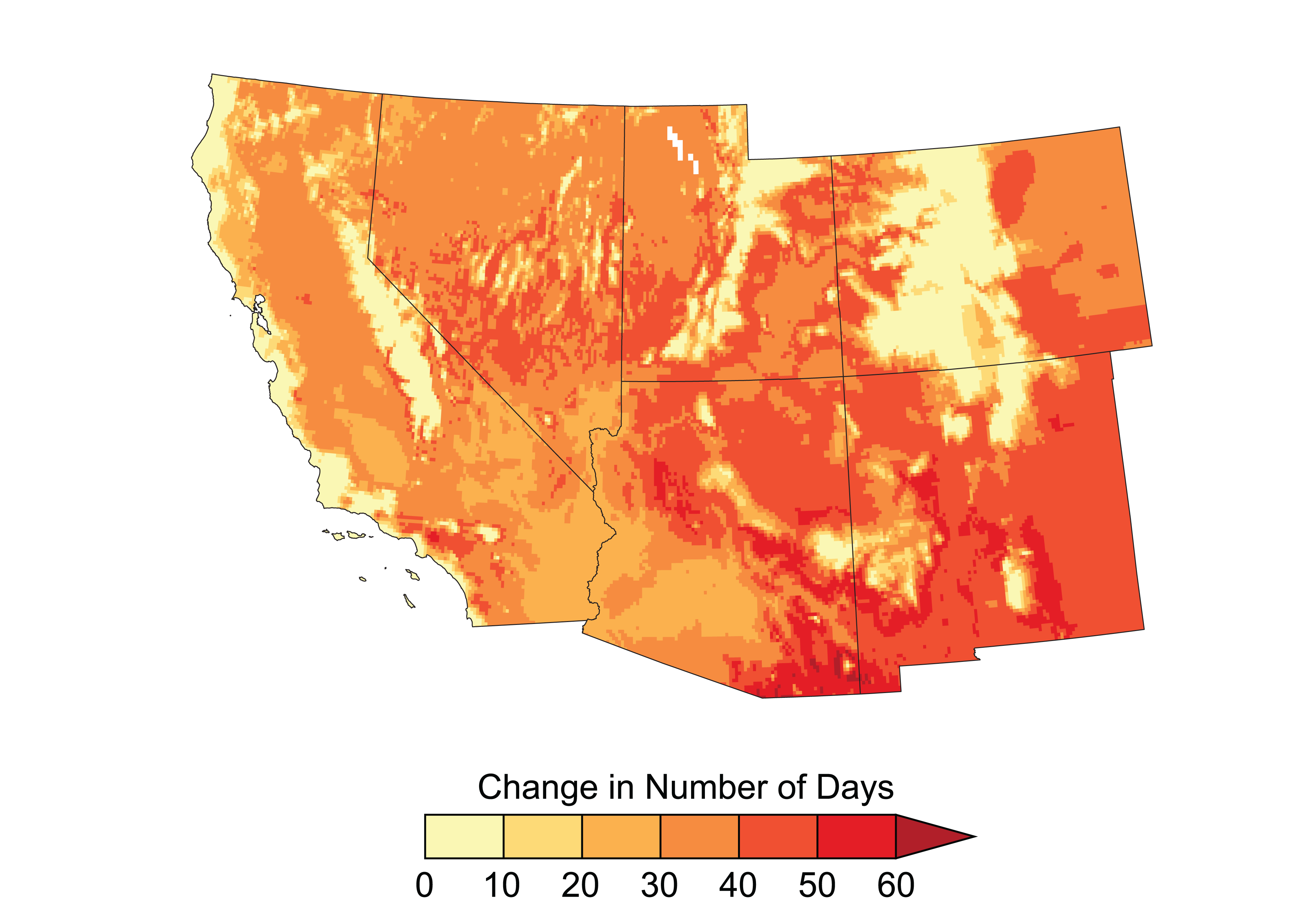The authors examined the scientific literature in their areas of expertise. The team placed the highest weight on scientific articles published in refereed peer-reviewed journals. Other sources included published books, government technical reports, and, for data, government websites. The U.S. Global Change Research Program issued a public call for technical input and provided the authors with the submissions. The University of Arizona Center for Climate Adaptation Science and Solutions organized the Southwest Regional Stakeholder Engagement Workshop on January 28, 2017, with over 70 participants at the main location in Tucson, AZ, and dozens of participants in Albuquerque, NM, Boulder, CO, Davis, CA, Los Angeles, CA, Reno, NV, and Salt Lake City, UT, all connected by video. Participants included scientists and managers. The author team met the following day for their only meeting in person. Subsequently, authors held discussions in regular teleconferences. Many chapter authors met at the all-author meeting March 26–28, 2018, in Bethesda, MD.
Key Message 1: Water Resources
Water for people and nature in the Southwest has declined during droughts, due in part to human-caused climate change (very high confidence). Intensifying droughts (very high confidence) and occasional large floods (medium confidence), combined with critical water demands from a growing population, deteriorating infrastructure, and groundwater depletion, suggest the need for flexible water management techniques that address changing risks over time (high confidence), balancing declining supplies with greater demands.
Description of evidence base
Research has found that hotter temperatures can make hydrologic droughts more severe. The unprecedented droughts in the Colorado River Basin and California showed that increased temperatures from climate change intensified the severity of the drought.13,14,56,59 Climate change, more than natural cycles, has reduced snowpack.49 Models project more drought under climate change,13,56,62 snowpack and streamflow decline in parts of the Southwest, and decreasing surface water supply reliability for cities, agriculture, and ecosystems.479
Major uncertainties
Projecting future streamflow and hydrologic characteristics in a basin contains many uncertainties. These differences arise because of uncertainty in temperature and precipitation projections due to differences among global climate models (GCMs), uncertainty in regional downscaling, uncertainty in hydrological modeling, and differences in emissions, aerosols, and other forcing factors. Another important uncertainty is differences in the hemispheric and regional-scale atmospheric circulation patterns produced by different GCMs, which generate different levels of snow loss in different model simulations. A key uncertainty is the wide range in projections of future precipitation across the Southwest;105 some projections of higher-than-average precipitation in the northern parts of the Southwest could roughly offset declines in warm-season runoff associated with warming.105
Detection is the finding of statistically significant changes different from natural cycles. Attribution is the analysis of the relative contribution of different causes and whether greenhouse gas emissions from human sources outweigh other factors. Attribution of extreme events, such as the recent California drought to climate change, is an area of emerging science. On the one hand, Seager et al. (2015)58 concluded that the California drought was primarily driven by natural precipitation variability. Sea surface temperature anomalies helped set up the high-pressure ridge over California that blocked moisture from moving inland. On the other hand, Diffenbaugh et al. (2015),56 Williams et al. (2015),14 and Berg and Hall (2017)55 concluded that high temperatures from climate change drove record-setting surface soil moisture deficits that made the drought more severe than it would have been without climate change. Storage of increased precipitation in soils may partially offset increased evaporation, possibly making drought less likely.480
In addition to the uncertainties in regional climate and hydrology projections and attribution studies, other uncertainties include potential changes in water management strategies and responses to accommodate the new changing baseline. Additionally, external uncertainties can impact water use in the region via legal, economic, and institutional options for augmenting existing supplies, adding underground storage and recovery infrastructure, and fostering further water conservation, changes in unresolved water rights, and changes to local, state, tribal, regional and national policies related to the balance of agricultural, ecosystem, and urban water use.
Description of confidence and likelihood
The very high confidence in historical droughts derives from the detection and attribution analyses of temperature increases, snow decreases, and soil moisture decreases that have documented hydrologic droughts in California and the Colorado River Basin due to anthropogenic climate change and the conclusions of the Climate Science Special Report (CSSR), Volume I of the Fourth National Climate Assessment.74 The very high confidence in drought projections derives from the multitude of analyses projecting drought in the Southwest under a range of emissions scenarios and the conclusions of the CSSR.74 Only medium confidence is found for flood projections due to lack of consensus in the model projections of precipitation. Increasingly arid conditions and the potential for increased water use by people lead to an assessment of high confidence in the need for new ways to address increasing risks of water scarcity. The actual frequency and duration of water supply disruptions will depend on the preparation of water resource managers with drought and flood plans, the flexibility of water resource managers to implement or change those plans in response to altered circumstances,481 the availability of funding to make infrastructure more resilient, and the magnitude and frequency of climate extremes.
Key Message 2: Ecosystems and Ecosystem Services
The integrity of Southwest forests and other ecosystems and their ability to provide natural habitat, clean water, and economic livelihoods have declined as a result of recent droughts and wildfire due in part to human-caused climate change (high confidence). Greenhouse gas emissions reductions, fire management, and other actions can help reduce future vulnerabilities of ecosystems and human well-being (high confidence).
Description of evidence base
Scientific research in the Southwest has provided many cases of detection and attribution of historical climate change impacts. Detection is the finding of statistically significant changes different from natural cycles. Attribution is the analysis of the relative contribution of different causes and whether greenhouse gas emissions from human sources outweigh other factors. Published field research has detected ecological changes in the Southwest and attributed much of the causes of the changes to climate change. Wildfire across the western United States doubled from 1984 to 2015, compared to what would have burned without climate change, based on analyses of eight fuel aridity metrics calculated from observed data, historical observed temperature, and historical modeled temperature from global climate models.7 The increased heat has intensified droughts in the Southwest,13,14 reduced snowpack,49,156 and advanced spring warmth.101 These changes have dried forests,154,155 driving the wildfire increase.7,153 Tree death across the western U.S. doubled from 1955 to 2007146 likely due to increased heat,21 wildfire,7 and bark beetle infestations,148,149 all of which are mainly attributable to climate change7,148,149 more than to other factors such as fire exclusion or competition for light and water.146 In the Yosemite National Park biome shift,209 the research analyzed the relative contributions of temperature, precipitation, and the Pacific Decadal Oscillation. The researchers found that “Minimum temperature was the main effect related to accelerating annual branch growth in krummholz whitebark pine and initiation of pine invasion into formerly persistent snowfield openings.” In the Yosemite National Park small mammal range shift,210 the locations of the monitoring sites allowed relative isolation of climate change factors. Moritz et al. (2008)210 state, “The transect spans YNP [Yosemite National Park], a protected landscape since 1890, and allowed us to examine long-term responses to climate change without confounding effects of land-use change, although at low to mid-elevations there has been localized vegetation change relating to seral dynamics, climate change, or both.”
Cutting emissions through energy conservation and renewable energy can reduce ecological vulnerabilities. Under high emissions, projected climate change could triple burned area in the Sierra Nevada, but under low emissions, fire could increase just slightly.173 Projections of biome shifts213,215 and wildlife range shifts217,218,219,220,221 consistently show lower vulnerabilities with lower emissions. Extensive research on, and practice of, fire management show that allowing naturally ignited fires to burn in wilderness and using low-severity prescribed burns can reduce fuels and the risk of high-severity fires under climate change.181,182,183 Proactive use of fire in Yosemite, Sequoia, and Kings Canyon National Parks has improved the resilience of giant sequoias and other trees to severe fires.187,188,190,191 Numerous research results have identified climate change refugia for plants and animals.207,482,483
Major uncertainties
Because climate model projections often diverge on whether precipitation may increase or decrease, two broad types of fire futures152 could be 1) dry-fire future—hotter and drier climate, increased fire frequency, fire limited by vegetation, potential biome change of forest to grassland after a fire due to low natural regeneration, and high carbon emissions; or 2) intense-fire future—hotter and wetter climate, more vegetation, increased fire frequency and intensity, fire limited by climate, and higher carbon emissions. These two broad categories each encompass a range of fire conditions. On the ground, gradients of temperature, precipitation, and climate water deficit (difference between precipitation and actual evapotranspiration) generate gradients of fire regimes. Because climate change, vegetation, and ignitions vary across the landscape, potential fire frequency shows high spatial variability. Therefore, future fire types could appear in patches across the landscape, with different fire future types manifesting themselves in adjacent forest patches. Changes in aridity may shift some plant and animal species ranges downslope to favorable combinations of available moisture and suitable temperature, rather than upslope.484 Plants and animals may respond to changing climate, and have been shown to do so, through range shifts, phenology shifts, biological evolution, or local extirpation. Thus, no single expected response pattern exists.224
Description of confidence and likelihood
Field evidence provides high confidence that human-caused climate change has increased wildfire, tree death, and species range shifts. Projections consistently indicate that continued climate change under higher emissions could increase the future vulnerability of ecosystems, but that reducing emissions and increasing fire management would reduce the vulnerability, providing high confidence in positive benefits of these actions.
Key Message 3: The Coast
Many coastal resources in the Southwest have been affected by sea level rise, ocean warming, and reduced ocean oxygen—all impacts of human-caused climate change (high confidence)—and ocean acidification resulting from human emissions of carbon dioxide (high confidence). Homes and other coastal infrastructure, marine flora and fauna, and people who depend on coastal resources face increased risks under continued climate change (high confidence).
Description of evidence base
At the Golden Gate Bridge, San Francisco, sea level rose 9 ± 0.4 inches (22 ± 1 cm) from 1854 to 2016,236 and at San Diego, 9 ± 0.8 inches (24 ± 2 cm) from 1906 to 2016.237 Analyses of these gauges and hundreds around the world show a statistically significant increase in global mean sea level238,239 due to melting of land ice and expansion of warming water caused by climate change.21,240 Measurements of sea surface temperatures from buoys off the California coast and around the world, combined with remote sensing data, have found warming of the top 75 m of ocean water at a rate of 2 ± 0.4°F (1.1 ± 0.2°C) per century from 1971 to 2010,252 caused by climate change.21 Measurements and modeling of ocean acidity found an increase of acidity in the Pacific Ocean off San Diego of 25% to 40% (0.1 to 0.15 pH units) since 1750,485 caused by the increase of carbon dioxide in the atmosphere from cars, power plants, deforestation, and other human activities.21 Measurements along the California coast have found ocean acidity during the core upwelling season (April to October) increasing by as much as four times (0.7 pH units) to some of the most acidic values in the world.274 Griggs et al. (2017)242 project a median sea level rise of 19 inches (49 cm) and a range of 12–29 inches (30–73 cm; 67% probability) for the very low scenario (RCP2.6) and a median of 30 inches (76 cm) and a range of 19–41 inches (49–104 cm; 67% probability) for the higher scenario (RCP8.5) by the end of the century. On a similar timescale, Sweet et al. (2017)241 provide one map showing sea level rise projections for San Francisco, which shows a 39–47 inch (1–1.2 m) rise for the Intermediate scenario (approximately RCP8.5); the range for all of their scenarios is 0.3–2.5 m. Jevrejeva et al. (2016)486 project a sea level rise of 73 cm and a range of 12–74 inches (37–187 cm; 5% probability) for the higher scenario (RCP8.5) by 2100.
Major uncertainties
Catastrophic rapid loss of Antarctic and Greenland ice sheets could increase sea level more rapidly. Sea level rise at individual locations depends on the form of the seafloor (bathymetry) and other local conditions. Climate change impacts compound overfishing and make fish populations more vulnerable. Potential economic changes in California’s coastal and marine-based economies are subject to many different environmental and socioeconomic factors.
The full complexity of ecological responses to ocean acidification in combination with other stresses in California marine waters is currently unknown. Food supply for marine species,487 natural variation in resilience,488,489 and other environmental factors can affect the sensitivity of organisms to acidic conditions.
Description of confidence and likelihood
Field measurements at numerous locations have detected sea level rise, ocean warming, ocean acidification, and ocean hypoxia. Multiple model-based analyses have attributed these changes to human-caused climate change, giving high confidence to these impacts of climate change.
Key Message 4: Indigenous Peoples
Traditional foods, natural resource-based livelihoods, cultural resources, and spiritual well-being of Indigenous peoples in the Southwest are increasingly affected by drought, wildfire, and changing ocean conditions (very likely, high confidence). Because future changes would further disrupt the ecosystems on which Indigenous peoples depend (likely, high confidence), tribes are implementing adaptation measures and emissions reduction actions (very likely, very high confidence).
Description of evidence base
Abundant evidence and strong agreement among sources exist regarding current impacts of climate change in the region. Impacts of climate change on the food sources, natural resources-based livelihoods, cultural resources and practices, and spiritual health and well-being of Southwest Indigenous peoples are supported, in part, by evidence of regional temperature increases,23,24 drought,14,56,58,480 declines in snow,46,49,156 and streamflow,11,13,60,110 which have affected ecological processes, such as tree death,146 fire occurrence,7,152 and species ranges.211
Impacts specific to Indigenous peoples include: 1) declining surface soil moisture, higher temperatures, and evaporation converge with oak trees’ decreased resilience,285 diminished acorn production, and fire and pest threat to reduce the availability and quality of acorns for tribal food consumption and cultural purposes;306 and 2) declining vegetation, higher temperatures, diminished snow, and soil desiccation have caused dust storms and more mobile dunes on some Navajo and Hopi lands, resulting in damaged infrastructure and grazing lands and loss of valued native plant habitat.44,301,490 Evidence and agreement among evidence exist on the effects of climate-related environmental changes on culturally important foods,318,319 practices, and mental and spiritual health.42
Multiple projections of climate and hydrological changes show potential future change and disruption to the ecosystems on which Indigenous peoples depend for their natural resources-based livelihoods, health, cultural practices, and traditions. These include projections of increased temperatures and heat extremes;24 longer, more severe, and more frequent drought;13,65 expanded forest mortality;197,198 increased wildfire;172 and ocean temperature increases, ocean acidification, and inundation of coastal areas.242,273
Evidence of specific future disruptions to traditional food sources from forests and oceans mostly relies upon inferences, based on projections of changing seasonality and associated phenological or ecosystem responses298,307 or potential changes to biophysical factors, such as salinity of freshwater lakes, and associated impacts to culturally important fish species.310
Abundant evidence exists of autonomous adaptation strategies, projects, and actions, rooted in traditional environmental knowledge and practices or integration of diverse knowledge systems to inform ecological management to support adaptation and ecosystem resilience.490,491,492,493
In response to the current and future projected climate changes and ecosystem disruptions, a number of tribes in the Southwest are planning and implementing energy efficient and renewable energy projects.327,361,494,495 These include installation of or planning for photovoltaic systems,361 solar arrays, biofuels, microgrids, utility-scale wind, biogas, geothermal heating and cooling systems,327 increased building insulation,495 and carbon offsets.334 Several Southwest tribes, such as the Ramona Band of Cahuilla and the Santa Ynez Band of Chumash Indians, have established or are in the process of establishing energy independence.495 A well-recognized example is that of the Blue Lake Rancheria Tribe, in California, which was named a Climate Action Champion in 2015–2016 for implementing innovative climate actions, such as an all-of-the-above renewable strategy of transportation, residential, and municipal renewable energy projects, which includes a biogas project. A number of these projects (Ch. 15: Tribes, Figure 15.1) aim to simultaneously meet mitigation and adaptation objectives, such as the Yurok Tribe and the Round Valley Indian Tribe, which have developed carbon offset projects under California’s cap-and-trade program to support tribally led restoration and stewardship.496
Several tribes in the Southwest are developing climate change adaptation plans to address the current climate-related impacts and prepare for future projected climate changes. The Santa Ynez Band of Chumash Indians, which is working towards an integrated energy and climate action plan, the Yurok Tribe, the Gila River Indian Community, and the Tohono O’odham Nation are among the first tribes in the region to develop climate adaptation and resilience plans, which reflects a nationwide gap or need for further tribal adaptation plan development. Lack of capacity and funds has hindered progress in moving from planning to implementation, which is similar to the situation for U.S. cities.497
Major uncertainties
Uncertainties in the climate and hydrologic drivers of regional changes affecting Indigenous peoples in the Southwest include 1) differences in projections from multiple GCMs and associated uncertainties related to regional downscaling methods, 2) the way snow is treated in regional modeling,498 3) variability in projections of extreme precipitation, and, in particular, 4) uncertainties in summer and fall precipitation projections for the region.88 Additional uncertainties exist in sea level rise projections242 and, for the California coast, ocean process model projections of acidification, deoxygenation, and warming coastal zone temperatures.499 For the most part, Native lands lack instrumental monitoring for weather and climate, which is a barrier for long-term climate-related planning.493
Complexities arising from the multiple factors affecting ecosystem processes, including tree mortality and fire, often preclude formal detection and attribution studies. Much evidence and agreement among evidence exist regarding the role of hotter temperatures in fire and tree mortality.7,146 Detection and attribution studies seldom focus explicitly on tribal lands.
Other uncertainties relate to estimating future vulnerabilities and impacts, which depend, in part, on adjudication of unresolved water rights and the potential development of local, state, regional, tribal, and national policies that may promote or inhibit the development and deployment of adaptation and mitigation strategies.
Description of confidence and likelihood
The documented human-caused increase in temperature is a key driver of regional impacts to snow, soil moisture, forests, and wildfire, which affect Indigenous peoples, other frontline communities, and all of civil society. Case study evidence, using Indigenous and Western scientific observations, oral histories, traditional knowledge and wisdom (e.g., Ferguson et al. 2016493), suggests that climate change is affecting the health, livelihoods, natural and cultural resources, practices, and spiritual well-being of Indigenous communities and peoples in the Southwest (e.g., Redsteer et al. 2011, 2013; Wotkyns 2011; Cozzetto et al. 2013; Gautam et al. 2013; Navajo Nation Department of Fish and Wildlife 2013; Nania and Cozzetto et al. 2014; Sloan and Hostler 2014; Redsteer and Fordham 201744,302,305,307,310,311,490,500,501). Abundant evidence gives high confidence that hotter temperatures, tree mortality, and increased wildfire and drought, due to climate change, would disrupt the ecosystems on which Indigenous people depend; the likelihood of these impacts affecting individual tribes will depend in large part on the non-climatic stresses (such as historical legacies and resource management practices) interacting with the climatic stresses. Very high confidence exists that tribes are developing adaptation measures and emissions reductions to address current and future climate change, based on abundant ongoing initiatives and associated documentation.
Key Message 5: Energy
The ability of hydropower and fossil fuel electricity generation to meet growing energy use in the Southwest is decreasing as a result of drought and rising temperatures (very likely, very high confidence). Many renewable energy sources offer increased electricity reliability, lower water intensity of energy generation, reduced greenhouse gas emissions, and new economic opportunities (likely, high confidence).
Description of evidence base
Numerous studies link Southwest hydrologic drought with a decline in renewable hydroelectricity generation in the region. Hydroelectric generation depends on runoff to fill reservoirs to maximize generation capacity.336,337 During the California drought, which was intensified by climate change,14,56 hydroelectric generation in California fell from 43 trillion watt-hours (TWh) in 2011 before the drought to 14 TWh in 2015 during the drought.335 Climate change also reduced the snowpack46,47,48,49 and river runoff on which hydroelectric generation depends.336,337
Similarly, low reservoir levels in Lake Mead—which is formed by damming the Colorado River—driven by reduced Colorado River runoff13,59 can reduce the efficiency and production levels of hydropower at Hoover Dam.
Fossil fuel generation efficiency depends on the temperature and availability of the external cooling water. Warming could reduce energy efficiency up to 15% across the Southwest by 2100.91 Higher temperatures also increase electric resistance in transmission lines, causing transmission losses of 7% under higher emissions.344 Replacing fossil fuel generation with solar power renewables reduces greenhouse gas emissions and water use per unit of electricity generated.90 This supports the assertion that increasing solar energy generation in the Southwest could meet the energy demand no longer being met by hydropower and fossil fuel as well as the expected increase in energy use in the future.
Solar energy production is also an economic opportunity for the region. The energy potential for renewable energy is estimated to range from one-third to over ten times 2013 generation levels from all sources.502 The lower range assumes capacity requirements remain at 2013 levels,502 but recent data show an upward trend in Southwest energy use.89
The high potential for solar energy projects in the Southwest and the extent of federally owned land in the Southwest (well over half the total surface area for the six-state region) prompted the Bureau of Land Management (BLM) and the U.S. Department of Energy to conduct a programmatic environmental impact analysis of a new Solar Energy Program to further support utility-scale solar energy development on BLM-administered lands.502,503 This potential capacity, combined with the increasingly competitive cost of solar and wind,504 presents economic opportunities for the region and an opportunity to reduce overall greenhouse gas emissions.
Solar and renewable energy jobs are increasing. The solar workforce increased 25% in 2016, while wind employment increased 32%.505 Jobs in low-carbon-emission generation systems, including renewables, nuclear, and advanced low-emission natural gas, comprise 45% of all the jobs in the electric power generation and fuels technologies.505 Growing Southwest energy use, competitive prices for renewables, and the renewable energy potential of the Southwest favor the replacement of fossil-fuel-generated energy by renewable solar and wind energy.
Major uncertainties
Climate model projections of the future diverge on whether precipitation may increase or decrease for much of the region, so hydroelectric power changes may exhibit spatial variation. The amount of runoff is a key factor driving the generation potential for hydroelectric power. A key uncertainty is how much hydroelectricity generation will decline. Some projections of higher-than-average precipitation in the northern parts of the Southwest could roughly offset declines in warm-season runoff associated with warming.105
Energy demand in the Southwest is increasing, but the rate of growth is uncertain.506 Changes in energy market prices cause future uncertainty in the future mix of energy sources for the Southwest.502 The low cost of natural gas and the competitive cost of solar and wind renewables make it somewhat certain the proportion of the energy generated from these sources will continue to increase and offset reductions in traditional fossil-fuel-generated energy, reducing overall greenhouse gas emissions.504 Renewable energy job growth potential is also uncertain and depends on the factors mentioned above.505
Additionally, daily to multiyear variation in coastal cloud cover affects solar electricity generation potential along the California coast.507,508,509,510
Description of confidence and likelihood
Hydrological drought in California reduced hydroelectric generation335 and fossil fuel electricity generation efficiencies. Drought and rising temperatures under climate change can reduce the ability of hydropower and fossil fuel electricity generation to meet growing energy use in the Southwest (very likely, very high confidence). Renewable solar and wind energy offers increased electricity reliability, lower water intensity for energy generation, reduced greenhouse gas emissions, and new economic opportunities (likely, high confidence).
Key Message 6: Food
Food production in the Southwest is vulnerable to water shortages (medium confidence). Increased drought, heat waves, and reduction of winter chill hours can harm crops (medium confidence) and livestock (high confidence); exacerbate competition for water among agriculture, energy generation, and municipal uses (medium confidence); and increase future food insecurity (medium confidence).
Description of evidence base
Climate change has altered climate factors fundamental to food production and rural livelihoods in the Southwest. Abundant evidence and good agreement in evidence exist regarding regionally increasing temperatures, reduced soil moisture, and effects on regional snowpack and surface water sources.13,23,67,74,79 The heat of climate change has intensified severe droughts in California14,56 and the Colorado River Basin.13 Hotter temperatures and aridity in the Southwest affected agricultural productivity from 1981 to 2010.366
Elevated temperatures can be associated with failure of some crops, such as warm-season vegetable crops, and reduced yields and/or quality in others.374 Temperatures in California, Nevada, and Arizona are already at the upper threshold for corn372 and rice.373 While crops grown in some areas might not be viable under hotter conditions, other crops such as olives, cotton, kiwi, and oranges may replace them.375 In the Southwest, climate change may cause a northward shift in crop production, potentially displacing existing growers and affecting rural communities.376 Quality of specialty crops, both nutritive and sensory, declines because of increased temperatures and other changes associated with a changing climate,393,511 which is particularly important in a region producing a majority of the Nation’s specialty crops. Decreases in winter chill hours may reduce fruit and tree nut yields, though the magnitude may vary considerably.380,381
High ambient temperatures associated with climate change could decrease production of rangeland vegetation across the Southwest,384 reducing available forage for livestock. Ranching enterprises across the region have vastly different characteristics that will influence their adaptive capacities.390
Local-scale impacts can vary considerably across the region depending upon surface and groundwater availability. Drought causes altered water management, with heavy reliance on a limited groundwater to sustain regional food production.130 Despite severe localized impacts, losses in total agricultural revenue are buffered by groundwater reliance to offset surface water shortage.369 Parts of the Southwest have exhausted sustainable use of groundwater resources. When surface water supplies are reduced, farmers shift to increased groundwater pumping, even when pumping raises production costs371—declining groundwater tables significantly increase pumping costs and require drilling of deeper wells.130 Continued climate change may reduce aquifer recharge in the southern part of the region 10%–20%.370 Climate change is projected to cause longer and more severe drought periods that will intensify the uncertainty associated with Southwest water supply and demand. Water-intensive forage crops and the livestock industry are especially vulnerable to climate-related water shortages.15
Major uncertainties
The impacts of climate change on food production depend upon microclimatology and local-scale environmental, social, and economic resources. While the scientific community relies upon computer models and generalized information to project likely future conditions, unforeseen consequences of warming temperatures, such as those related to pests, pollinators, and pathogens, may be more detrimental than some of the well-documented projections, such as temperature impacts on reduced yields. The effects of increased precipitation supplying the deep root zone may somewhat offset the increase in temperature, so agricultural drought may be less frequent for trees and other crops dependent on deeper soil moisture.480 Scientists are producing more drought- and heat-tolerant cultivars, which may be suitable to production in the projected warmer and more arid climate of the Southwest.
Since food security relies on complex national and international trade networks, how regional climate change may affect local food security is uncertain. Many adaptation options, such as using alternate breeds, crops, planting and harvest dates, and new (sometimes untested) chemicals, may work in certain situations but not others. Thus, predicting impacts to food production in a hotter/drier land is likely to vary by crop and location, necessitating flexibility and adaptive management. Of paramount uncertainty is the impact of water shortage on regional food production as other uses may outcompete producers for limited supplies.
Description of confidence and likelihood
Since the availability of affordable food around the world depends upon complex trade and transportation networks, the effects of climate change on Southwest food availability, production, and affordability remain highly complex and thereby uncertain and classified with medium confidence. While the viability of rural livelihoods is vulnerable to water shortages and other climate-related risks, rural livelihoods may be supplemented by other nonagricultural income, such as recreation and hunting. The viability of rural livelihoods is highly complex, and risk is, therefore, classified with medium confidence. Crop impacts related to hotter and drier conditions and reduced winter chill periods, caused by climate change, are classified with medium confidence. Not all crops are directly harmed by warming temperatures, and the simulation impacts of reduced chilling hours can produce a fairly wide range of results depending upon model assumptions. Hotter and drier conditions can directly harm livestock via reduced forage quantity and quality and exposure to higher temperatures, conferring a high confidence classification. Projections of future drought and water scarcity portend increased competition for water from other beneficial uses with medium confidence.
Key Message 7: Human Health
Heat-associated deaths and illnesses, vulnerabilities to chronic disease, and other health risks to people in the Southwest result from increases in extreme heat, poor air quality, and conditions that foster pathogen growth and spread (high confidence). Improving public health systems, community infrastructure, and personal health can reduce serious health risks under future climate change (medium confidence).
Description of evidence base
Strong evidence and good agreement among multiple sources and lines of evidence exist, indicating that the Southwest regional temperature may increase, snowpack may decline, soil moisture may decrease, and drought may be prolonged.14,23,24,56,58,62,68,74,480
Exposure to hotter temperatures and extreme heat events, partly a manifestation of human-caused climate change, already led to heat-associated deaths and illnesses in heat waves in Arizona and California in the early and mid-2000s.398,399,400,401,402,406,444,450,512
Good agreement exists among models that most of the Southwest may become more arid, due to the effect of increasing temperatures on snow, evaporation, and soil moisture.58,65,70,80 Projections also indicate that flood-causing atmospheric rivers may become more moist, frequent, and intense84,85,86 and that intense daily precipitation may increase in frequency.88,513 Models project declines in future runoff of key Southwest rivers, such as the Colorado, due chiefly to the effects of increased temperature on soil moisture and snowpack.13,71,110
Strong evidence exists of the effects of extreme heat on public health in the region (e.g., Knowlton et al. 2009, Oleson et al. 2015, Wilhelmi et al. 2004400,514,515) and for reasonable projections of future deaths and costs of lost labor productivity due to enhanced future episodes of extreme heat. Factors that predict a person will be at increased risk include being confined to bed, not leaving home daily, and being unable to care for oneself;516 various general indicators of being socially isolated (such as living alone, the presence of or frequency of social contacts, or being isolated linguistically);516,517,518,519 and persons who are socioeconomically disadvantaged.516,517,518,519 Dehydration in general and dehydration associated with medications (neurological and non-neurological) that impair thermoregulation or thirst regulation were also associated with elevated risk of mortality during the 2003 heat wave in France.520 The role of prescription medications in altering the risk for heat-associated illness or death is of growing interest and concern.521 This issue is more important as chronic diseases become more prevalent and more people take prescription drugs.
Given the proportion of the U.S. population in the Southwest, a disproportionate number of West Nile virus, plague, hantavirus pulmonary syndrome, and Valley fever cases occur in the region.158,420 West Nile virus transmission is projected to shift to the north under climate change, and areas where the mosquitoes that carry this virus are present may see increased abundances.441,442,443 The mosquito species that carry Zika and chikungunya are established in parts of the region, but mosquito-borne transmission has only been observed in Puerto Rico, the U.S. Virgin Islands, Florida, and Texas (Ch. 14: Human Health).
Overall, the Southwest is ill-prepared to absorb the additional patient load that would accompany climate change associated disasters.448 The American College of Emergency Physicians assigned an overall emergency care grade of C or C+ to three of the six Southwest states, with the others receiving poorer grades, and four of the six states received an F grade for access to emergency care.448
Major uncertainties
Uncertainties in the climate and hydrologic drivers of regional changes affecting public health include 1) differences in projections from multiple GCMs and associated uncertainties related to regional downscaling methods, 2) variability in projections of extreme precipitation, 3) uncertainties in summer and fall precipitation projections for the region,88 and 4) uncertainties in models that project occurrence and levels of climate-sensitive exposures that are known to impact public health, such as local and regional ozone air pollution, particulate air pollution (for example, increases from wildfire emissions or reductions from advancements in vehicle emissions control technology), or occurrence and exposure to toxins or pathogens.
Studies of non-fatal illnesses using healthcare services data can yield critical insights different from those one can derive from death data. Most studies of heat impacts on health have focused on deaths rather than nonfatal illnesses. This is primarily because hospitalization and emergency department data, compared with death certificate data, are not as available or uniform across locations, and when they are available it can be difficult to access them due to concerns for patient confidentiality. Ongoing enhancements to electronic medical records technology and adoption across the healthcare services sector will potentially address those limitations in the near future and will provide invaluable data resources to identify and adopt prevention strategies that reduce the vulnerability of patients and populations to the adverse effects of climate-sensitive exposures.
More recent work focusing on the more deadly neuroinvasive West Nile virus indicates that regionally, the central and southern parts of the country may experience increasing cost from this vector-borne disease in the future.178,440 The lack of a statistical association between temperature and West Nile virus diagnoses in the Southwest may be because extreme temperatures in some locations rise above the survival thresholds for vectors, thereby reducing mosquito abundance522,523 and disease transmission.419 Additionally, because the data for diseases like Valley fever are limited to cases, rather than exposures, the link to climate change is not clear.435,436
While improvements to individual health and to clinical and community infrastructure are highly likely to 1) improve physical capacity to adapt to climate effects, 2) diminish the overall impacts on population health, and 3) increase societal capacity to respond quickly to dampen the effects of long-term and emergency responses,446,447,524 other factors also influence adaptive capacity, adding considerable uncertainty. For example, many factors influence the observed number of West Nile virus cases including available habitat, human prevention and control efforts, and recent history of cases in a given area.442,525,526,527
Description of confidence and likelihood
Evaluation of confidence levels for the assessment of the type and magnitude of observed or projected public health and clinical impacts was based on the strength of evidence underlying the answers to three primary questions:
What characteristics of the region’s historical climate and weather patterns translate directly (for example, extreme heat) or indirectly (for example, higher temperatures fostering ozone formation or the growth and spread of pathogens and vectors) to exposures associated with observed human health risks that are unique to or overrepresented in the Southwest?
Does recent historical evidence indicate that climate and weather patterns have changed, or do climate models project changes over the 21st century, thereby increasing the risk of human exposures and health impacts evaluated under question 1?
What are the determinants of individual and population vulnerability that increase or decrease the risk of an adverse health outcome or affect adaptive capacity? These include factors that affect a) biological susceptibility, b) physical environment and exposure characteristics, and c) social, behavioral, or economic factors.
To the extent possible, the evaluation recognized and accounted for the complex interconnections among these factors, the fact that their relative importance may differ across geographic and temporal scales, and the combined uncertainties of evidence from multiple disciplines (for example, health sciences, climatology, and social or behavioral sciences) that can vary substantially.
The information revealed by answering those questions, gives high confidence that extreme heat will be the dominant driver of exposures that pose the greatest health risks in the Southwest—including direct effects of heat on individuals and indirect effects of heat on air pollution levels. Due to the uncertainties related to the frequency and intensity of human exposures and related to impacts on essential ecosystem services under projected climate change, the statement “Improving public health systems, community infrastructure, and personal health can reduce serious health risks under future climate change” is made with medium confidence. Nevertheless, clinical and public health policy effectiveness assessments show that such improvements can reduce the burden of disease and health risks associated with environmental exposures.
